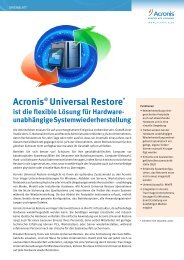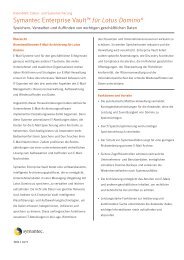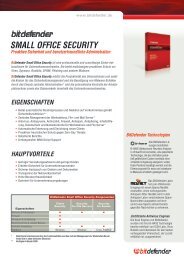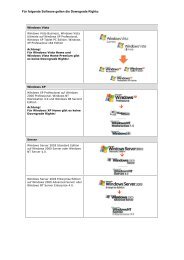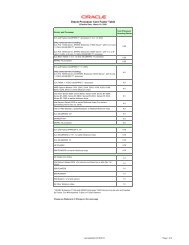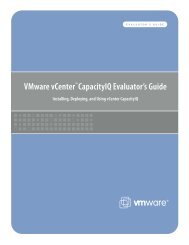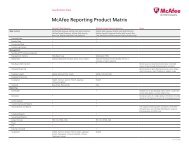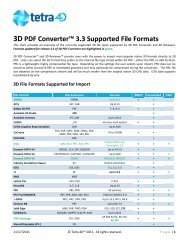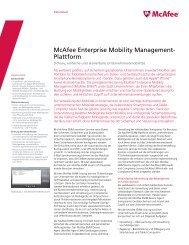A Closer Look at the RamSan-710
A Closer Look at the RamSan-710
A Closer Look at the RamSan-710
Create successful ePaper yourself
Turn your PDF publications into a flip-book with our unique Google optimized e-Paper software.
This brings us to an answer to <strong>the</strong> original question – it is important to support a<br />
high number of IOPS because your servers can produce a high number of IOPS.<br />
When your processor is faster than your storage, <strong>the</strong>n your processor literally waits<br />
on storage for d<strong>at</strong>a needed to perform calcul<strong>at</strong>ions – this is called I/O wait time. If<br />
your processor is waiting, <strong>the</strong>n your users are waiting too. In addition, you are<br />
wasting a significant investment in <strong>the</strong> l<strong>at</strong>est processors and software licenses.<br />
By supplying very high random IOPS, <strong>the</strong> <strong>RamSan</strong>-<strong>710</strong> elimin<strong>at</strong>es I/O wait time for<br />
all of its stored files. Because its random IOPS capabilities are so extraordinary, a<br />
single <strong>RamSan</strong>-<strong>710</strong> can provide I/O acceler<strong>at</strong>ion for multiple host servers.<br />
L<strong>at</strong>ency and I/O<br />
Peak applic<strong>at</strong>ion performance is affected by <strong>the</strong> combin<strong>at</strong>ion of response time<br />
(l<strong>at</strong>ency) and peak I/O <strong>at</strong> certain thread counts, block sizes, and read/write p<strong>at</strong>terns.<br />
HDD RAID systems typically offer 4-8 millisecond access times. To lower response<br />
times and increase performance, HDD RAID systems add RAM or Flash caches to<br />
<strong>the</strong>ir array controllers. These caches can lower l<strong>at</strong>ency to around 0.5 millisecond<br />
access times when <strong>the</strong> requested d<strong>at</strong>a resides in <strong>the</strong> cache, but when it doesn’t and<br />
<strong>the</strong> d<strong>at</strong>a request goes through to <strong>the</strong> back-end disks, <strong>the</strong> l<strong>at</strong>ency returns to 4-8<br />
milliseconds. The <strong>RamSan</strong>-<strong>710</strong>, on <strong>the</strong> o<strong>the</strong>r hand, offers 0.035 millisecond access<br />
times for writes. This is much faster than HDD RAID systems. The <strong>RamSan</strong>-<strong>710</strong><br />
provides 0.175 millisecond access times for reads. This is <strong>at</strong> least 25 times faster<br />
than most HDD RAID systems as well. In fact, in most cases <strong>the</strong> Flash-based <strong>RamSan</strong>-<br />
<strong>710</strong> will return d<strong>at</strong>a faster than <strong>the</strong> cache on RAID subsystems (regardless of <strong>the</strong><br />
type of storage used for <strong>the</strong> cache).<br />
For some customers, this combin<strong>at</strong>ion of low l<strong>at</strong>ency and sustainable I/O is <strong>the</strong> key<br />
to improving applic<strong>at</strong>ion performance.<br />
When you consider <strong>the</strong> <strong>RamSan</strong>-<strong>710</strong>’s blend of high combined bandwidth, fast<br />
random IOPS performance, and extremely low l<strong>at</strong>ency, it is clear why Texas Memory<br />
Systems calls <strong>the</strong> <strong>RamSan</strong> "The World's Fastest Storage®."<br />
July 2011 10 Texas Memory Systems





